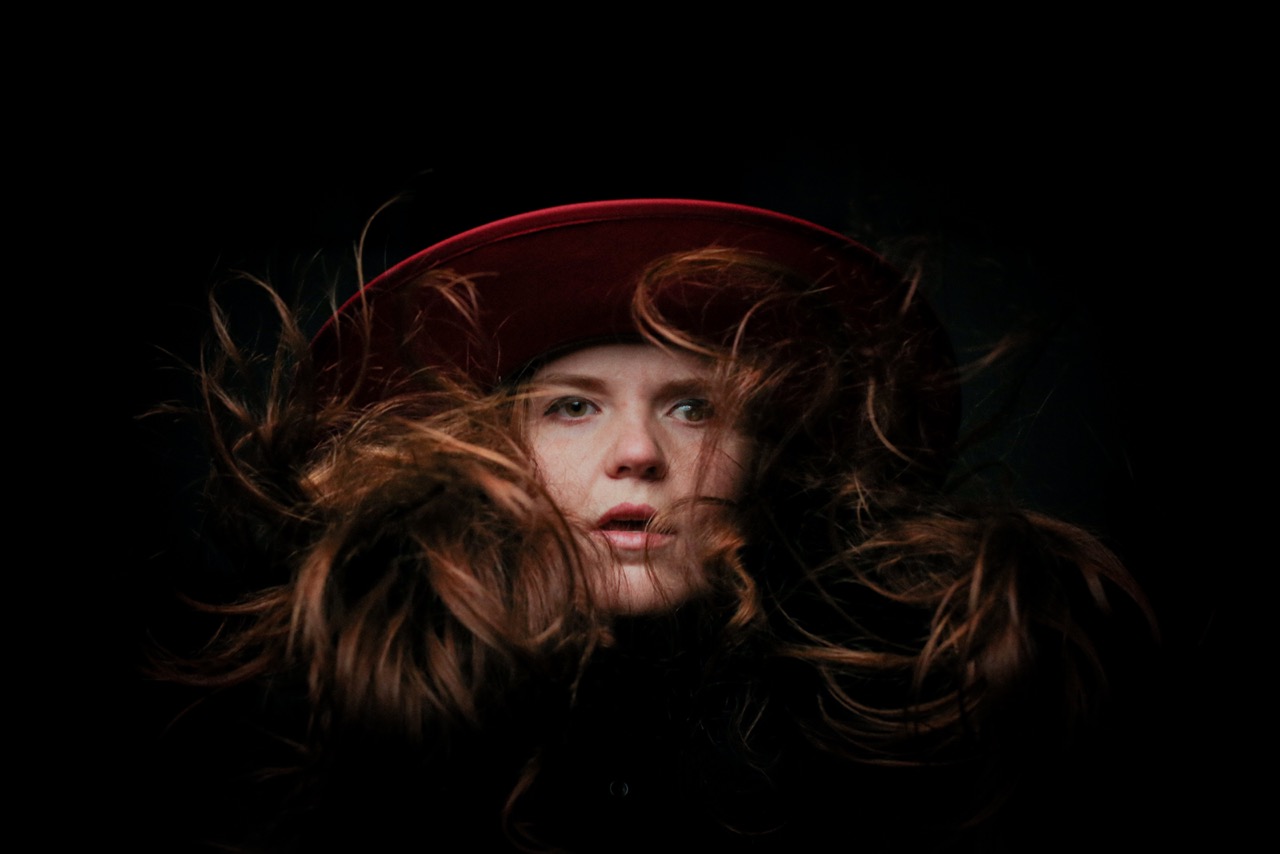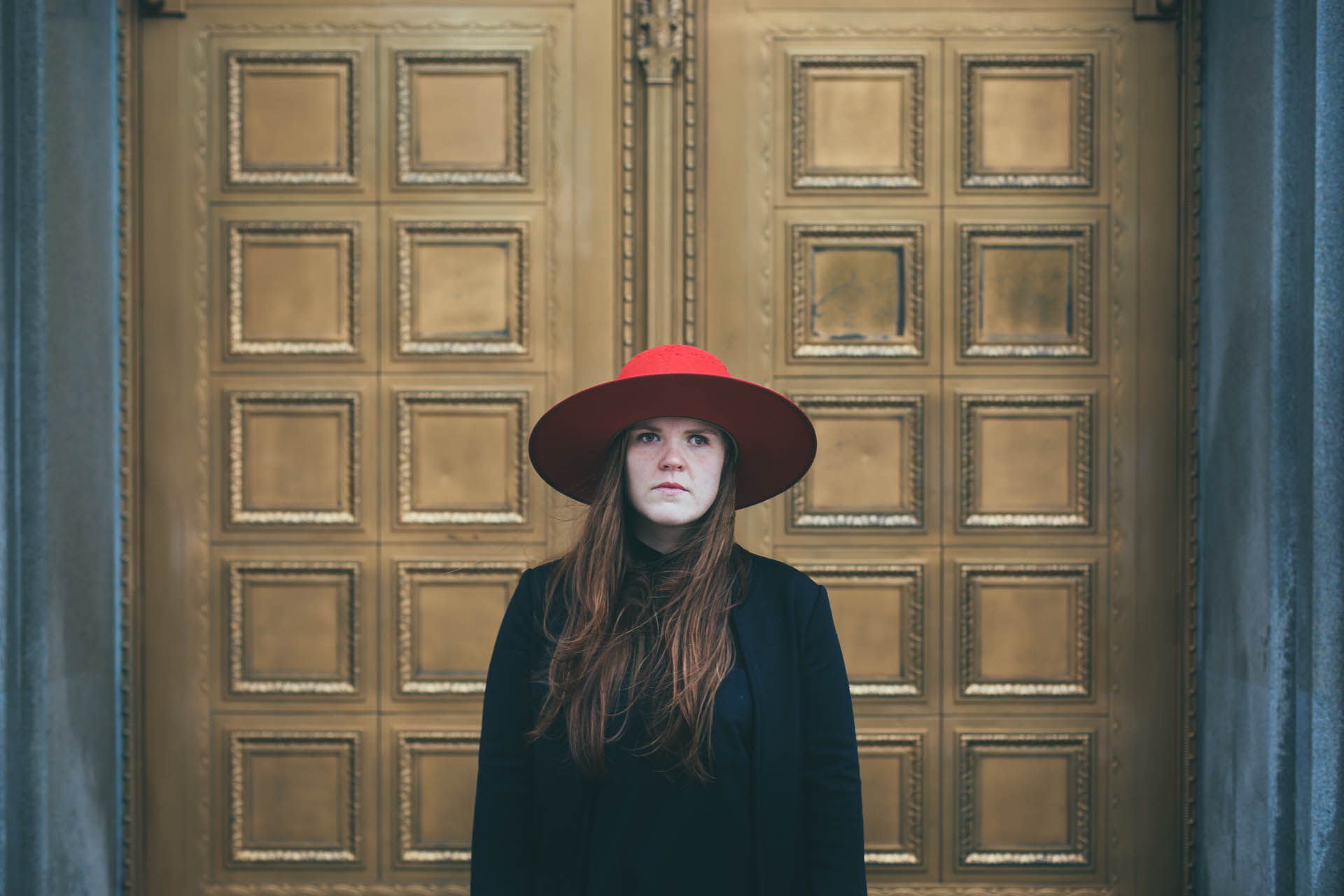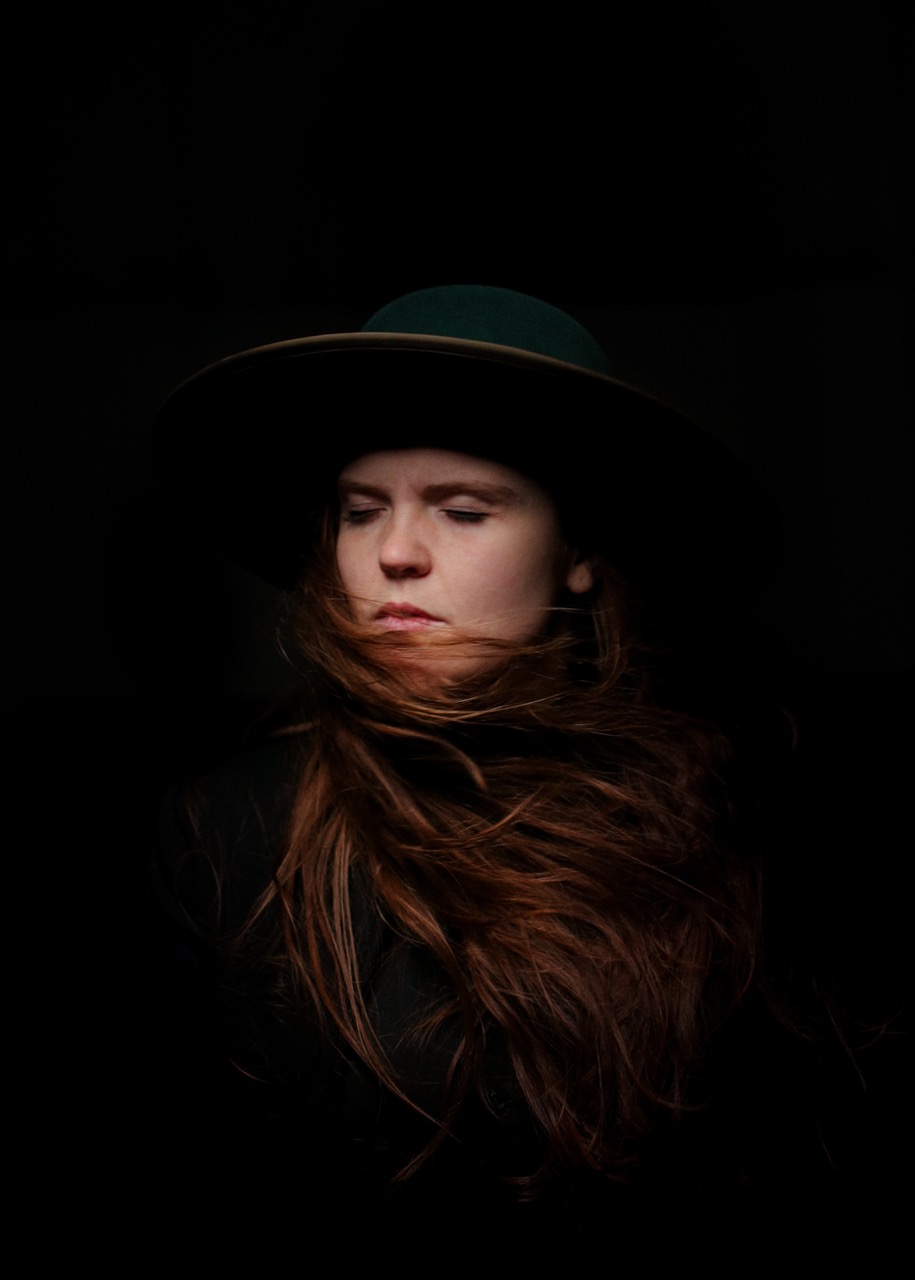 Credit: Nicole Shackelford
Credit: Nicole Shackelford
For someone who hasn’t had any coffee all day, Jax Anderson aka Flint Eastwood seems full of energy. We’re sitting on a pair of stools in Toronto’s iconic Horseshoe Tavern—a bar that doubles as a concert venue—and she’s getting ready to kick off her first headline tour. In her own words, Anderson creates, “pop music that never sleeps,” and she’s excited to bring it to a bunch of small venues for the next month.
“My favorite part of playing live is seeing different people and hearing their stories,” Anderson starts. She motions to my Knuckle Puck t-shirt and says, “I like the community aspect [of pop-punk]… Feeling that community vibe is very important to me.”
With a name as cool as Jax Anderson you can’t help but wonder why she adopted a moniker like “Flint Eastwood” instead of releasing music under her birth name. “I wanted a blank canvas when people heard the name,” she says, waving a hand in front of her face to demonstrate. “Even though it’s just me, it feels like a group. There are so many people who are so invested in what I’m doing and I appreciate them so much. I couldn’t do it without them.”
If you haven’t had a chance to see Flint Eastwood live, I recommend you fix that as soon as possible. Anderson on stage in her full Flint Eastwood persona is fierce—when she comes out with her long hair swinging around in two braids and shouts positive words and encouragement at you, you’re taken aback but also strangely comforted. When I saw her open for PVRIS in October (“They’re such genuine people,” she gushes), I was blown away by her massive stage presence and her care-free attitude.
“Over time, that persona has slowly merged with my everyday self,” Anderson says of her performance. “I feel like I’ve become a lot more comfortable about being my authentic self on-stage. There are different ways artists communicate, and for a long time I wanted to put on a show. I feel like, moving forward, I want to be as authentic as possible.”
“It’s so important for people to be themselves fully, no matter what the circumstances. I like to lead by example, and I think the best way to do that is being myself,” she says, adding with a laugh that she’s more hyper and animated on stage than off.
 Credit: Nicole Shackelford
Credit: Nicole ShackelfordOne of the most effective parts of Anderson’s on-stage presence is her physical appearance. At the October show, she was in a long black dress and a wide brimmed red hat. Today, she’s in overalls—she refers to them as being Carhartt brown—and a black beanie. “You caught me at a transition point,” she explains. “Before I was an Amish Ninja, now I feel like a Beatnik Farmer.”
This change in uniform reiterates her need to be her most authentic self. “I’ve been thinking about this a lot lately…the psychology of an outfit. I think it’s so interesting how much it affects your mood and how much it affects how you react to things. I feel more comfortable being myself and presenting my full self to everyone else in the hope that they present their full selves to me.”“I like to lead by example, and I think the best way to do that is being myself.”
“Authentic” is a good word to use when it comes to describing Anderson—she looks completely comfortable lounging on the stool, occasionally tapping her fingers on the table to drive home a point. Talking to her feels less like an interview and more like a chat between new friends—at one point, we bond over our mutual habit of using the word “hella”. “It makes me feel like Gwen Stefani,” she says, belting out a line from No Doubt’s “Hella Good.”
Teenage angst is another way Anderson can relate to Gwen Stefani: Growing up in church culture—“it was basically a religious cult,” she laughs—meant that she needed an outlet for her raging emotions. She learned how to express herself using music and she wants her songs to help others process their own feelings as well. “It’s okay to be vulnerable,” she says. “It’s okay to be yourself. And sometimes that’s messy, sometimes that’s difficult or scary. But it’s a very beautiful thing, it’s a joyous thing, it’s a thing to celebrate. I want people to celebrate everything about life,” she continues passionately. “Not just the good. I want them to see the beauty in the difficult things. I want people to feel.”
This is especially apparent in her latest video for the song “Monster”. The video was directed, edited, and mostly shot by Anderson herself. “I wanted to create something that’s ominous, heavy but still light. The song itself is about the passing of my mom, the time that was the most difficult for me. I had to convince myself that it would be alright, even though I miss her like crazy. It’s a light song, production-wise, but with very heavy subject matter.”
In order to properly convey her message of processing grief, Anderson put an immense amount of work into the video—a project she’s been sitting on since 2016, waiting for the right moment to release. “This was the first video I basically did myself,” she says. “The performance scenes you see: I took the gear, I had someone stand in and filmed them, and then another camera operator came in and did the identical shot.”
 Credit: Nicole Shackelford
Credit: Nicole Shackelford
“Even the choice of shooting it in black and white—I wanted it to feel like an old school horror film, I wanted it to be simple but also dramatic.” The video, which alternates shots of Anderson in an optometrist’s chair, shots of her being restrained by two shirtless men, as well as scenes of a little girl in a bedroom (“Her name is Noelle, she’s 12 and she took direction so well!”), is rife with symbolism. Anderson takes the time to break it down for me in loving detail. “The footage of the woman at the end is actual footage of my mom. She went legally blind before her passing and I’m blind in one eye so the close-up of the eyeball is mine…I wanted to pay homage to my mom’s blindness and mine.”
“I want people to celebrate everything about life…Not just the good. I want them to see the beauty in the difficult things. I want people to feel.”
On a somewhat lighter note, she talks about including the two topless men. “It’s bullshit that there are music videos where there are half-naked women next to dudes that are totally clothed,” she scoffs. “Every woman can express themselves any way they want, I’m not putting judgement on that—I think the female form is absolutely gorgeous—but I wanted to even the playing field a little bit. Even if it’s just shirtless dudes next to a fully-clothed female.”
Learning the backstory to “Monster” gives her live performance a different meaning for me. Before starting the song, Anderson encourages her audience to sing along without being self-conscious, “We’re going for loud, not pretty,” she shouts, putting special emphasis on the repeated line, “it’s gonna be alright, alright”.
“I strongly believe if you go through anything hard, or anytime there’s something difficult in life, you have to talk about it,” Anderson reflects. “Loneliness is something that humans can avoid a lot of time if you just talk or communicate—there’s always someone in your life that will give a shit, you just have to find them.”
Collaborating is something near and dear to her heart, so much so that it’s become part of Anderson’s brand. One of the biggest support systems she has is a group of artists known as Assemble Sound. “The one sentence version is that it’s a collaboration space for Detroit artists,” she says before going on to explain its origins. “A few years back, I felt very stunted and was thinking about moving to Nashville. Detroit artists were making such cool shit but they were just chilling in their basements alone and not getting other artists in on what they were doing. The barebones was that no one had a big enough studio to get other artists involved. Some artists friends and I bought a church from the 1870s and we built three different studios and opened the doors.”
“The only stipulation is that you have to have an open session,” she continues, “Meaning anyone can come in and help write with you. We don’t want it to be closed off. It’s cool to be able to have the community and that space when I’m home.” In fact, her opening act for this tour, the producer NYDGE is one of the other artists that frequent the Assemble Sound space, allowing Anderson the chance to bring more attention to her fellow Detroit musicians.
With only a few minutes left before “doors” (which is actually a curtain separating the stage area from the rest of the bar), I ask about her musical influences. “I tend to find people who are doing really well in their genres. I get bored easily, I’m always trying to find new things,” she says.“Loneliness is something that humans can avoid a lot of time if you just talk or communicate.”
Right now, she’s obsessed with M.I.A. “She’s so badass,” Anderson enthuses. “She’s been really inspiring me lately…I like artists that are honest and just put themselves out there. Be vulnerable, be yourself, everything will figure itself out.” Another major inspiration is Joan Baez, a folk singer who wrote powerful protest songs “and was so badass, just writing some heavy shit.”
“It’s a little off-putting when you first start really listening to pop music,” she says when I admit I don’t really listen to pop radio stations. “But once you get into it, it can hit your soul real hard.” She recommends Julia Michaels (“Man, she’s got such a sadness in her voice!”) and tells me that some of her favorite albums of the past year—from SZA and Noname—made her feel like she was listening to someone’s diary entries. I get the impression that this is the type of music she strives to make: Something that makes you feel like she’s talking directly to you.
Even though Flint Eastwood doesn’t go on until after 10pm, the audience is overjoyed to see her, her bass player and her drummer, bound out onto the stage—Anderson’s hair flies behind her like a modern-day Pippi Longstocking. There’s dancing, and singing, and every so often she banters with the people standing in the front row. It’s not a big space and the show isn’t sold out, but Anderson owns the room; when she tells us to put away our phones for part of the set, there’s no protest. For forty-five minutes, we’re not a group of strangers taking in a show on a Thursday night in the middle of winter, we’re a close-knit community and Jax Anderson is our queen.
Make sure you check out Flint Eastwood’s remaining headlining dates or catch her opening for PVRIS this spring:
2/01 – New York, NY – Mercury Lounge
2/02 – Washington DC – U Street Music Hall
2/03 – Philadelphia, PA – Coda
2/06 – Columbus, OH – The Basement
2/08 – Nashville, TN – The High Watt
2/09 – Indianapolis, IN – HI-FI
2/10 – Chicago, IL – Reggies Rock Club
2/11 – Minneapolis, MN – 7th St Entry
2/13 – Cincinnati, OH – Ballroom at Taft Theatre
With PVRIS:
2/15 – Atlanta, GA – Buckhead
2/16 – Richmond, VA – The National
2/17 – Sayreville, NJ – Starland Ballroom
2/18 – Providence, RI – The Strand
2/21 – Buffalo, NY – Town Ballroom
2/22 – Pittsburgh, PA – Stage AE
2/23 – Cleveland, OH – House Of Blues
2/24 – Grand Rapids, MI – The Intersection
2/26 – St Louis, MO – Delmar Hall
2/27 – Milwaukee, WI – The Rave
2/28 – Lawrence, KS – Granada
3/02 – Denver, CO – The Ogden
3/03 – Salt Lake City, UT – The Depot
3/05 – Seattle, WA – The Showbox
3/06 – Vancouver, BC – Vogue Theatre
3/07 – Portland, OR – Wonder Ballroom
3/09 – San Francisco, CA – The Fillmore
3/10 – Las Vegas, NV – House of Blues
3/11 – Tucson, AZ – Rialto
3/13 – Albuquerque, NM – Sunshine Theatre
3/15 – San Antonio, TX – The Aztec

